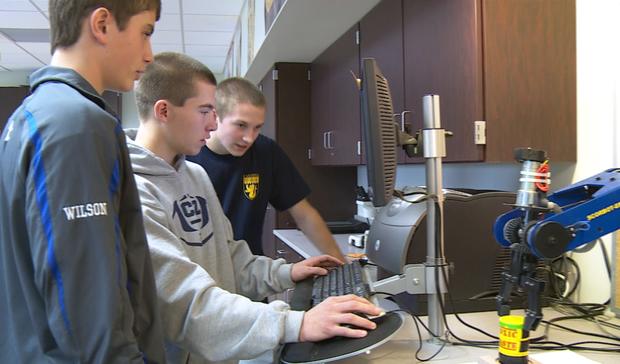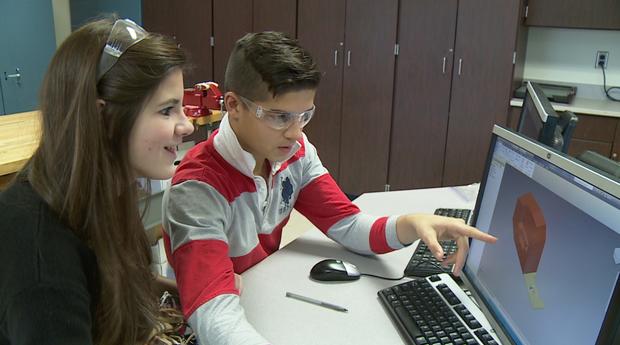Inspiring a generation of students "who can solve real problems"
CAZENOVIA, N.Y. - When you enter Chris Hurd's class at Cazenovia High, you know it's not a typical classroom. There are laser-cutters, computers with advanced 3D modeling software, and a robotic arm. Hurd's students have learned how to program robots that remove toxic waste.
"It really opened up my eyes to what's out there in the world," said Cole Wilson, a student in Hurd's manufacturing class. "Even though we're doing it on such a small scale, there are big companies out there that do this kind of stuff every day."
"You learn how to use multiple machines and they all, in the end, tie together," said Paul McLaughlin, another student.
There is a nationwide push to teach manufacturing skills in high school classrooms. Hurd has been teaching manufacturing for over 20 years now.
"You teach it by showing it, and then you actually let them do it," Hurd said. "You see that smile on their face when that little LED light goes on, you know they get it."
Project Lead the Way, (PLTW) offers courses in engineering and technology in more than 8,000 elementary, middle, and high schools across the country.
"They begin to see themselves, even in high school, as students who can solve real problems," said Dr. Anne Jones, senior vice president and chief programs officer at PLTW. Student enrollment in Computer Integrated Manufacturing (CIM) courses in high schools has gone up by 43 percent since 2012.
"This is signaling to students that this work is relevant, it's rigorous, it's important, and it's giving the opportunity for all students to participate in them," Jones said.
In his State of the Union address, President Obama boasted a gain of nearly 900,000 new jobs in manufacturing in the last six years. According to the Labor Department, there were about 12.3 million manufacturing jobs in December last year.
With the economy heating up slowly, manufacturers continue to struggle to find skilled workers.
"We see a shortage of people who are interested in what we do," said John Ryan, supervisor at Marquardt Switches, a company just down the road from Cazenovia High School.
"If a kid gets to go to a class and experience what it's like to program a robot... we know that we have a need for it," said Ryan.
Companies like Marquardt offer an alternative to a college education with a two-year apprenticeship program for entry-level positions.
"It points out the kids that there are fields you can go into that you only need a two-year education and you can make just as much, if not more, than if you had a four year degree," Hurd said.
Apprenticeships are hard to find. According to Urban Institute estimates, they make up only 0.2 percent of the U.S. workforce. Whether students choose to do apprenticeships or go to college, it's a future that's inspiring a new generation of manufacturers in American classrooms.



